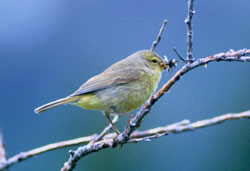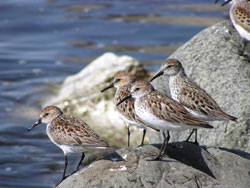Bird Viewing
Identification

With nearly 500 species of birds documented in Alaska, even the most seasoned birders need to look things up sometimes. Most of us still have a favorite field guide, worn and dog-eared with years of use, but many free on-line resources also stand ready to assist. They can range from a major center like Cornell Lab of Ornithology to Alaska Department of Fish and Game bird species profiles.
Bird Research Centers
More than just a research center, Cornell provides photos and information about birds across the U.S. and Canada. It has valuable information on birding basics, including a section on building identification skills, articles and advice on everything from gear reviews to naturalists' notebooks, and the largest collection of bird calls in the world. For example, the entry on Common Raven alone has seven different examples of this intriguing bird's vocal prowess.

The nation's first wildlife research station, Patuxent Wildlife Research Center, is still going strong, and its website covers a wealth of information about avian research and identification. You can learn about the bird banding laboratory and what it has taught us about the movement, survival, and behavior of birds. Patuxent also has a Bird Identification InfoCenter as well as links to bird population studies, historical data and much more.
The Migratory Bird Data Center, a cooperative effort of the U.S. Fish and Wildlife Service, USGS, and the Patuxent center, contains links to numerous bird population and habitat databases.
Online Checklist
E-bird is a great place to keep track of the birds you have seen while helping scientists at Cornell Lab of Ornithology and the National Audubon Society monitor bird population trends. If you're really stumped about a bird that you've seen, check your area on e-bird and find out when and where similar birds were recorded.
